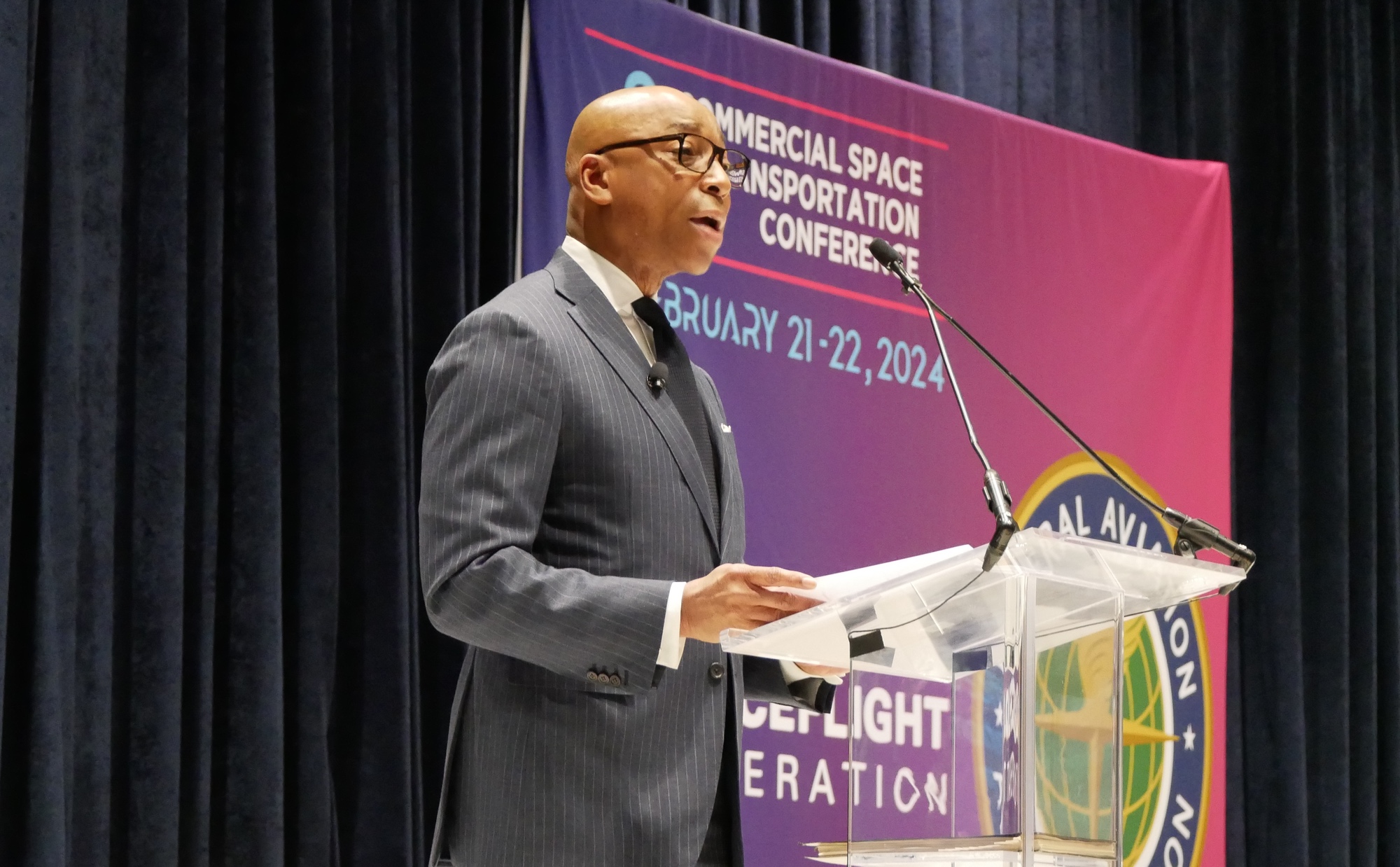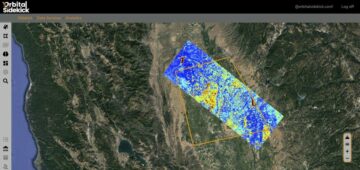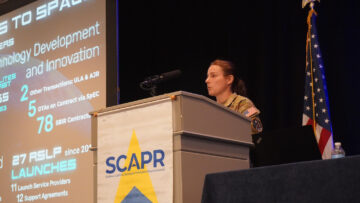
WASHINGTON — The Federal Aviation Administration will establish a committee to get industry input on ways to improve a new launch licensing process, two years before all launch providers must switch to the new regulations.
In a speech at the FAA Commercial Space Transportation Conference here Feb. 21, Kelvin Coleman, FAA associate administrator for commercial space transportation, said the agency would establish an aerospace rulemaking committee, or SpARC, to find ways to streamline launch and reentry licensing regulations that went into effect nearly three years ago.
The regulations, known as Part 450, were intended to streamline the licensing process and were developed relatively quickly, in response to a provision in Space Policy Directive 2 in 2018. Industry, though, has argued that the implementation of the regulations has led to licensing delays, with only a handful of companies receiving Part 450 licenses to date. It has become a key issue for the Commercial Space Transportation Advisory Committee (COMSTAC) in its recent meetings.
The issue also came up during a Senate hearing in October where industry officials called for improvements in Part 450. At that hearing, Bill Gerstenmaier, SpaceX vice president for build and flight reliability, warned that “the entire regulatory system is at risk of collapse” as other launch companies shift to Part 450 licenses over the next two years.
“We know some of you have challenges with Part 450,” Coleman said in his remarks, asking companies to share those issues with his office directly. “You don’t have to wait for a COMSTAC meeting or a congressional hearing.”
The SpARC, he said, would provide another means of refining the regulations. “[Part] 450 was developed pretty quickly, and we are all learning together as we go along. We’ve considered some opportunities, however, to smooth out a few wrinkles and enhance it to better meet its objectives.”
The Part 450 SpARC would provide industry with a way to discuss improvements to the regulations, particularly in areas like treatment of reentry vehicles and those launch vehicles still in a flight test program. “It will help us further enhance Part 450 to reduce the burden on the applicants and licensees, as well as the FAA.”
In a briefing with reporters after his speech, Coleman said the FAA had expected it would need to refine Part 450 given how quickly it was developed. “We really planned all along to take another look at 450 after we had implemented for a couple of years, and so that’s where we are right now,” he said. “This gives industry another opportunity to sit across the table from us and have a conversation about how the rule can be improved.”
He said he was confident that the benefits of the regulations would become apparent over time. “I think the way companies have leveraged 450 is the way they’ve leveraged the old rules,” he said, arguing that Part 450 is a “long game” rule “where we approve methodologies and processes, so we don’t have to go back each time around and look at mission by mission.”
Coleman said the goal is to get the SpARC established no later than the fall, but did not state how long he expected the committee to meet before providing recommendations to the FAA regarding potential changes to the regulations.
The regulations currently require all commercial launch providers to switch their licenses to Part 450 by March 2026, five years after the regulations went into effect. During a separate panel at the conference Feb. 22, Dan Murray, director of the Office of Operational Safety in the FAA’s Office of Commercial Space Transportation, said there are 20 existing licenses under the old regulations that would need to be transitioned to Part 450, although some older licenses may be combined because they involve the same vehicle operating from different launch sites.
“It’s not too early to start transitioning,” he said of the need for companies to start moving to the new regulations. “March 2026 will be here before we know it.”
- SEO Powered Content & PR Distribution. Get Amplified Today.
- PlatoData.Network Vertical Generative Ai. Empower Yourself. Access Here.
- PlatoAiStream. Web3 Intelligence. Knowledge Amplified. Access Here.
- PlatoESG. Carbon, CleanTech, Energy, Environment, Solar, Waste Management. Access Here.
- PlatoHealth. Biotech and Clinical Trials Intelligence. Access Here.
- Source: https://spacenews.com/faa-to-establish-committee-to-refine-launch-licensing-regulations/
- :has
- :is
- :not
- :where
- $UP
- 2%
- 20
- 2018
- 2026
- 21
- 22
- a
- About
- across
- administration
- advisory
- Aerospace
- After
- agency
- ago
- All
- along
- Although
- an
- and
- Another
- apparent
- applicants
- approve
- ARE
- areas
- argued
- around
- AS
- asking
- Associate
- At
- aviation
- back
- BE
- because
- become
- before
- benefits
- Better
- Bill
- Briefing
- build
- burden
- but
- by
- called
- came
- CAN
- challenges
- Changes
- combined
- commercial
- committee
- Companies
- Conference
- confident
- Congressional
- Congressional hearing
- considered
- Conversation
- Couple
- Currently
- dan
- Date
- delays
- developed
- DID
- different
- directly
- Director
- discuss
- Dont
- during
- each
- Early
- effect
- enhance
- Entire
- establish
- established
- existing
- expected
- faa
- Fall
- Feb
- Federal
- Federal Aviation Administration
- few
- Find
- five
- flight
- For
- from
- further
- get
- given
- gives
- Go
- goal
- had
- handful
- Have
- he
- hearing
- help
- here
- his
- How
- However
- HTTPS
- implementation
- implemented
- improve
- improved
- improvements
- in
- industry
- input
- intended
- into
- involve
- issue
- issues
- IT
- ITS
- jpg
- Kelvin
- Key
- Know
- known
- later
- launch
- learning
- Led
- leveraged
- licensees
- licenses
- Licensing
- like
- Long
- Look
- March
- May..
- means
- Meet
- meeting
- methodologies
- Mission
- moving
- Murray
- must
- nearly
- Need
- New
- next
- no
- now
- objectives
- of
- Office
- officials
- Old
- older
- on
- only
- operating
- operational
- opportunities
- Opportunity
- or
- Other
- out
- over
- panel
- part
- particularly
- planned
- plato
- Plato Data Intelligence
- PlatoData
- policy
- potential
- president
- pretty
- process
- processes
- Program
- provide
- providers
- providing
- provision
- quickly
- really
- receiving
- recent
- recommendations
- reduce
- refine
- refining
- regarding
- regulations
- regulatory
- relatively
- reliability
- require
- response
- right
- Risk
- Rule
- rules
- Safety
- Said
- same
- Senate
- separate
- Share
- shift
- sit
- Sites
- smooth
- So
- some
- Space
- SpaceX
- sparc
- speech
- start
- State
- Still
- streamline
- Switch
- system
- table
- Take
- test
- than
- that
- The
- their
- There.
- they
- Think
- those
- though?
- three
- time
- to
- together
- too
- transitioned
- transitioning
- transportation
- treatment
- two
- under
- us
- vehicle
- Vehicles
- vice
- Vice President
- wait
- warned
- was
- Way..
- ways
- we
- WELL
- went
- were
- will
- with
- would
- years
- you
- zephyrnet









